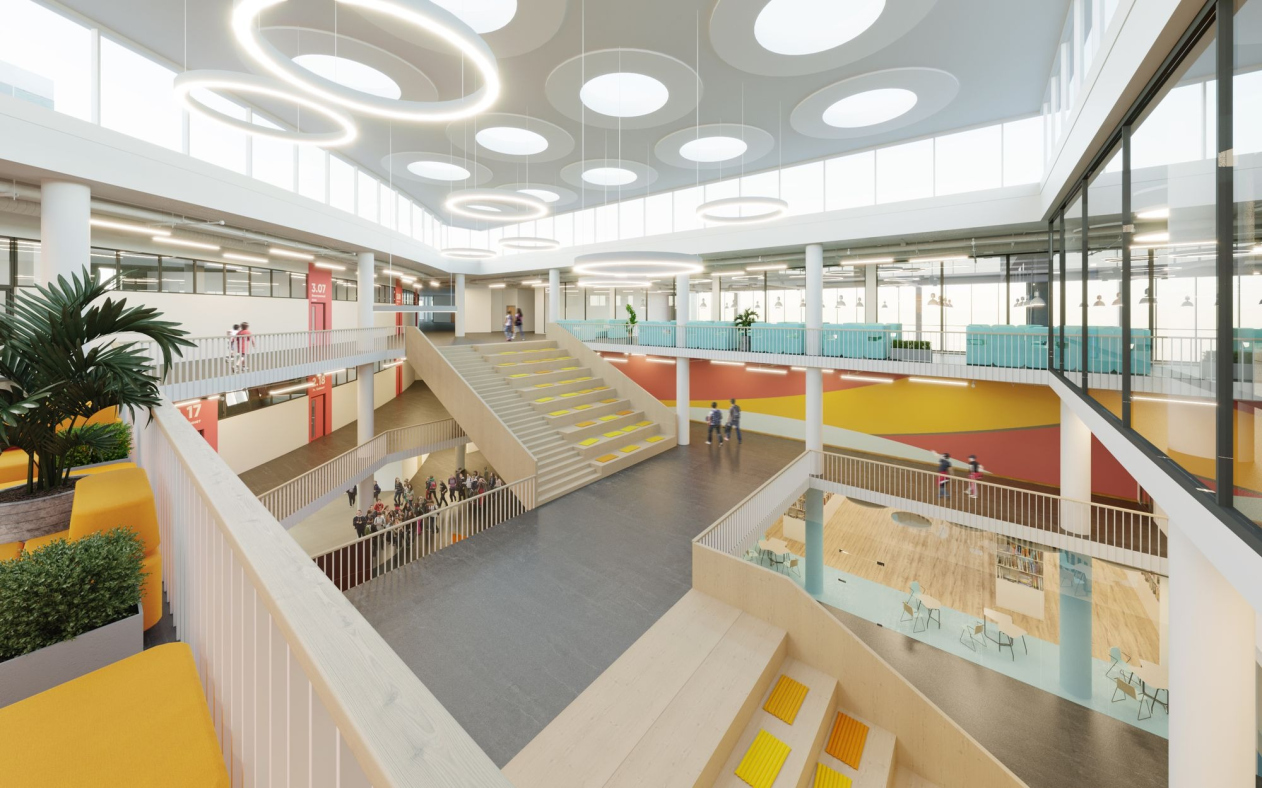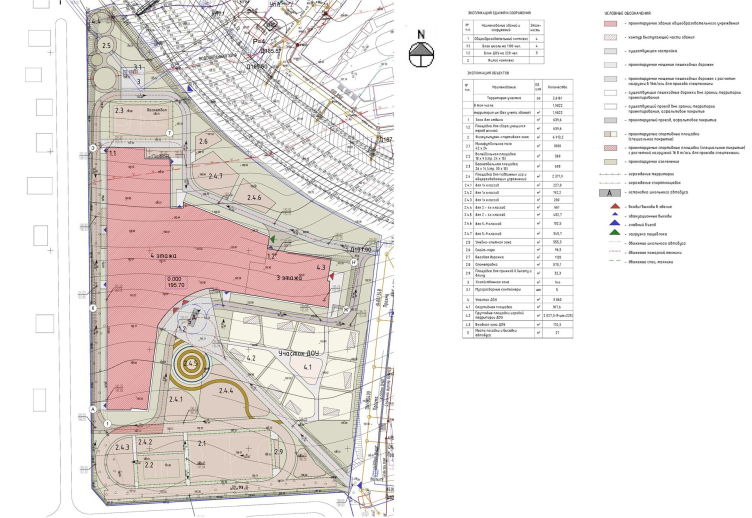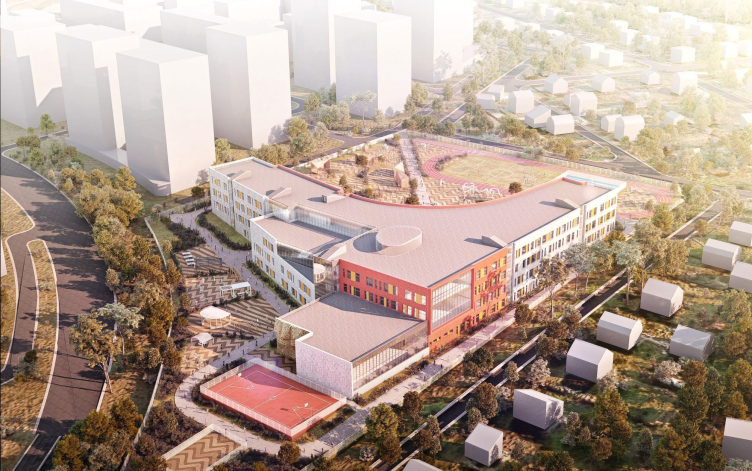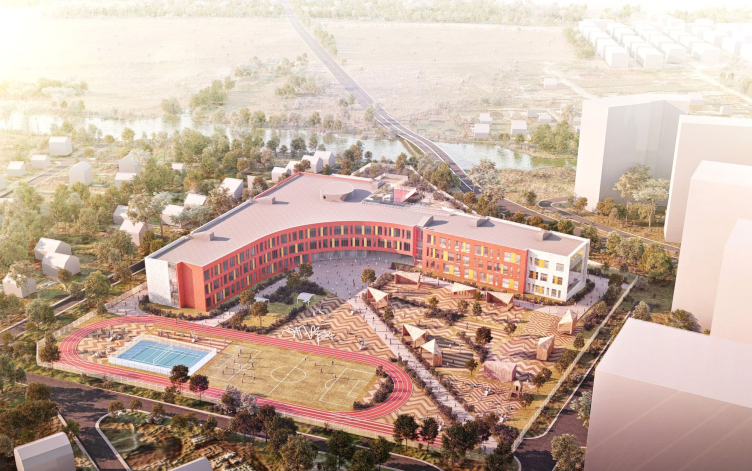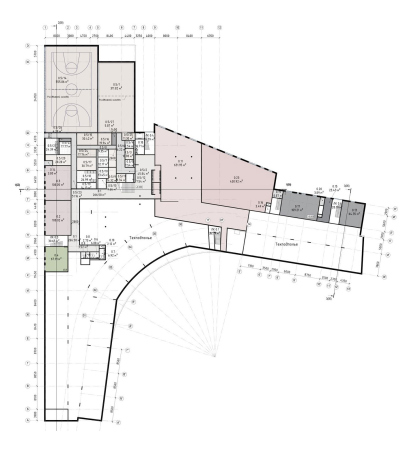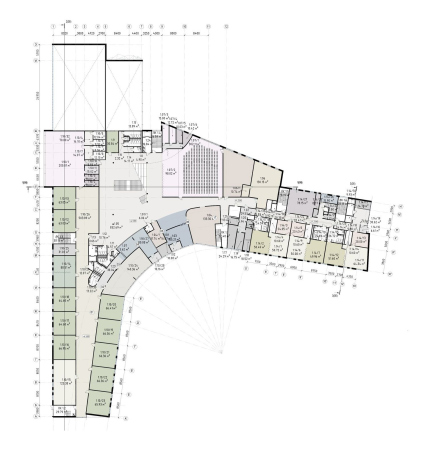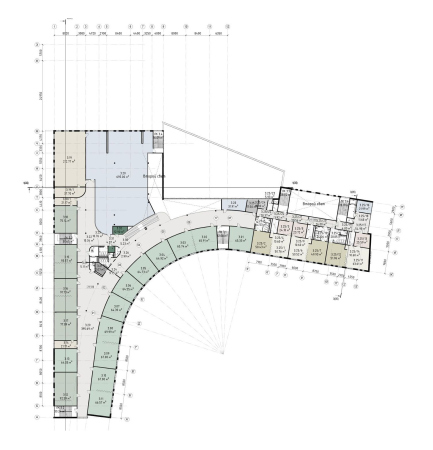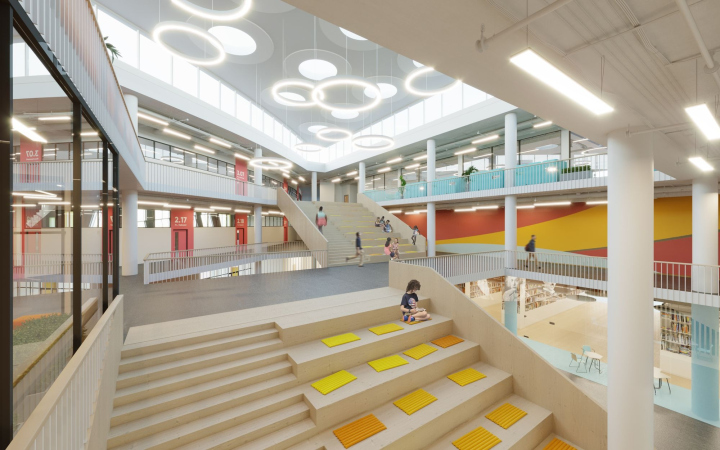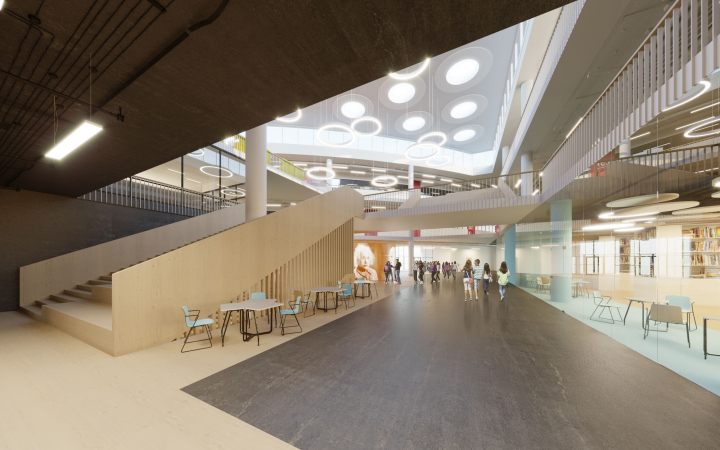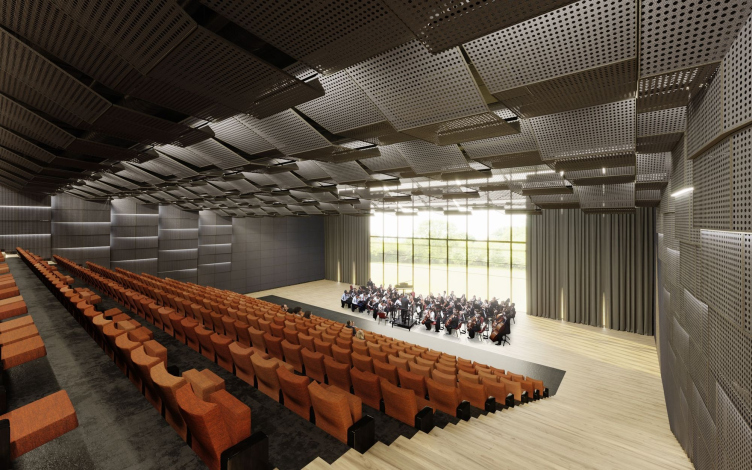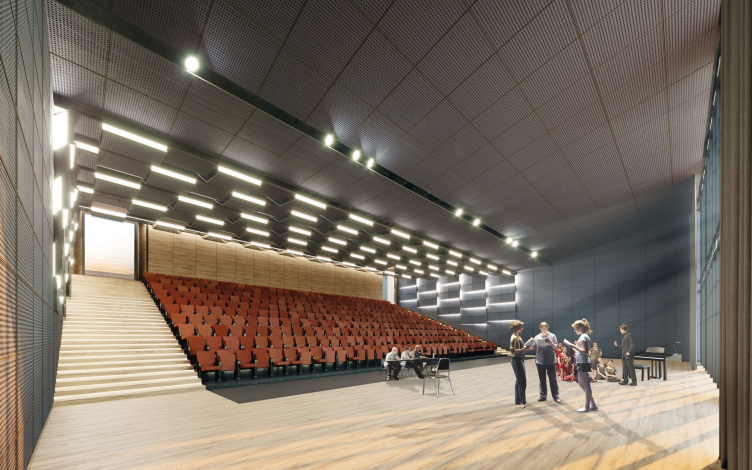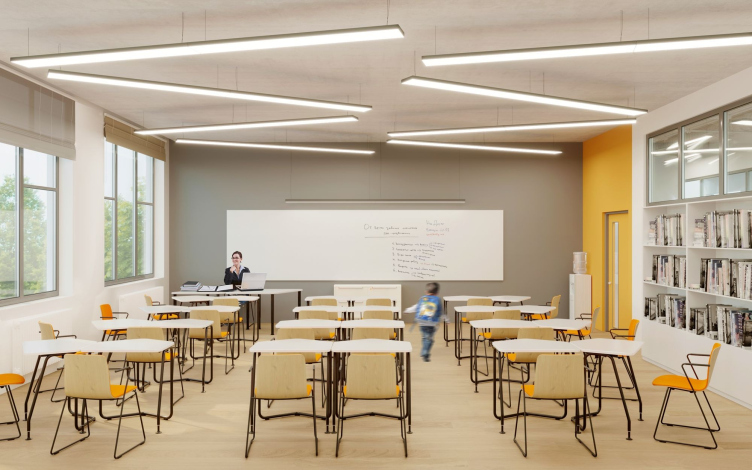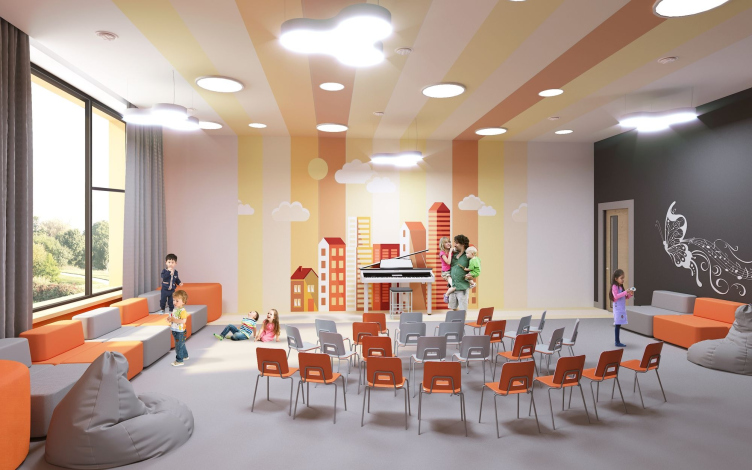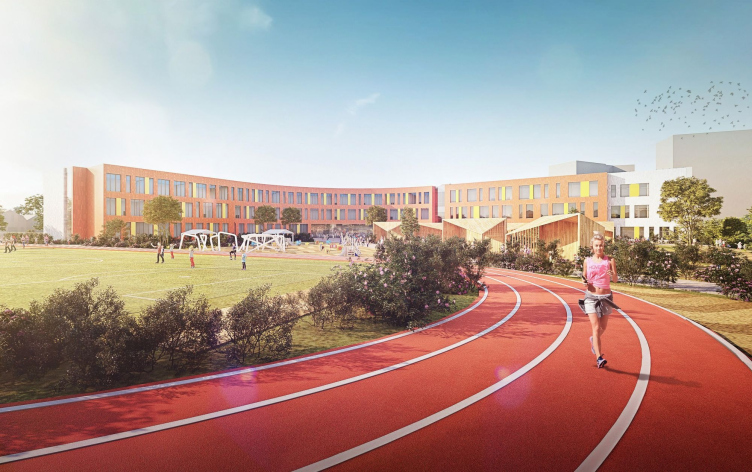All the necessary urban and transport infrastructure is also present in the new formation, including the recently built kindergarten and the school named “Logic”. The “Prokshino” metro station of the Sokolnicheskaya line is a 15 minutes’ walk away. The nearest areas of Moscow can be accessed by the Kaluzhskoe Highway by bus or by car.
The successful implementation of the project – and it was announced as the best one by popular vote on the “Active Citizen” website in 2020 – provided momentum for the further development of the land. For the construction of the second stage, a large piece of land behind the Novomikhailovskoe Highway was allotted. The residential development, which, in addition to the houses of the block type, also included seven towers, straddles both sides of the Magellan Avenue – the main transport artery of this area that connects it to the Kaluzhskoe Highway. Currently, the buildings have been completed and the residents are moving in.
The 2.6-hectare riverside land site on the right side of the avenue is still lying vacant. When still in the design stage, the developer reserved it for the construction of a new educational center. There is a necessity for it, despite the recently-opened “Logic” school for 1,300 students. “Spanish Quarters” is essentially cut off from the city infrastructure – there are only private residences and country homes lying around it. Schools and kindergartens are few and far between, and those that are there are filled to capacity. Until the school was built, children had to ride to school to neighboring areas. But even after it was finally opened, the issue of lack of educational places remained quite acute, as the population continues to grow.
The master plan. The school and the kindergarten within “Spanish Quarters” housing complex
Copyright: © ASADOV Architects
ASADOV architects got down to designing the school once it won the competition organized by the developer. The architects had a task of creating a modern educational space – not just a school but a mini-town, in which everything is focused on harmonious education and development of children. Such a task turned out to be very resonant with the ideas promoted by the Asadov team. Their project of an educational complex in Troitsk and the recently constructed school in Domodedovo demonstrate exactly this kind of approach, when instead of a rank-and-file set of corridors and classrooms a rich and diverse environment is formed with a public core, an atrium and an amphitheater, as well as with a possibility for transforming the space, with unconventional functional content of creative laboratories, greenhouses, and even an observatory on the roof. With budget constraints in place – and the above-mentioned schools were built on municipal budgets – implementing such an approach was quite a difficult task. In the small-sized Domodedovo school, for example, the architects had to go out of their way to make the amphitheater idea become a reality. In this case, when the client himself wanted to see in the project innovative trends of recent years, the architects were limited only by the existing construction regulations.
The school and the kindergarten within “Spanish Quarters” housing complex
Copyright: © ASADOV Architects
The land site allotted for the construction of the school building, has a considerable relief drop and a rectangular shape with one acute angle pulled northward. The land site narrows and descends in the direction of the Sosenka River. From the north, it is delineated by Sadovaya Street with private residences behind it. From the northeast, the border is marked by Magellan Avenue.
Plan-wise, the building got a “V” shape. The top of the corner faces the river, and two wings swing open to the south. There is a large school yard between them. The shape of the building makes the most of the terrain’s height difference, balancing between the floors. It seems as though the volume has a varying height, although in reality it stays in the range of 3 to 4 floors.
The school and the kindergarten within “Spanish Quarters” housing complex
Copyright: © ASADOV Architects
Andrey Asadov shared that the overall compositional solution was largely determined by strict insolation restrictions. All of the classrooms had to be positioned closer to the south facade, which gets more natural light. This semicircular façade turned out to be the longest one, embracing the territory of the yard. A sports block, an assembly hall, a catering unit and canteens for students and preschoolers are located in the northern part of the building. The kindergarten is located in the right wing. It has its own independent entrance, and it is connected with the school only by the common catering unit.
The main entrance is situated in the central point of the semicircular south facade. The door on the right leads to the junior high, on the left – to the senior high. However, this division is mostly conditional. Inside, children of all ages meet in the large multi-height atrium.
“The atrium and the amphitheater are particularly important. This is a unifying, multifunctional space, the territory of childhood and one of the key elements of education, because it is during the process of informal communication that a student can feel like a part of society, a part of a large and friendly world.”
The spacious atrium of a triangular form is placed in the central point of the buildings, where its two main beams cross, comprising all of the school’s main premises, and the public core with gyms and concert halls. The three-story atrium gathers the whole space together, both horizontally and vertically. On the first-floor level, it serves as the zone of transit, communication and recreation, featuring small cafes and quiet corners for individual studies. And, thanks to the broad “amphitheater” staircases, it connects all the functional zones, located on different floors. The amphitheater inside the school atrium is a time-tested successful solution. The high-school students always find numerous ways to use it – as a place for mass events, as a grand lecture hall, and as a playground during recesses.
One of the key ideas of the project is the possibility of transforming the space. The architects use it in the classrooms with pull-out glass partitions, as well as in the grand auditorium adjoining the atrium. The wall behind the stage of the auditorium is also designed as a collapsible one; if you remove it, you will get an arena-like concert space so that the spectators will be able to watch the performance not just from the spectator seats but from the amphitheater as well.
The grand auditorium. The school and the kindergarten within “Spanish Quarters” housing complex
Copyright: © ASADOV Architects
The grand auditorium. The school and the kindergarten within “Spanish Quarters” housing complex
Copyright: © ASADOV Architects
In addition to the modern classrooms with walls, upon which you can write and draw, the educational complex provides for a large number of extra options: a hybrid library, a school coworking space, rooms for extracurricular studies, laboratories, foreign language studies, and recording studios.
The school and the kindergarten within “Spanish Quarters” housing complex
Copyright: © ASADOV Architects
The school and the kindergarten within “Spanish Quarters” housing complex
Copyright: © ASADOV Architects
The school and the kindergarten within “Spanish Quarters” housing complex
Copyright: © ASADOV Architects
The school and the kindergarten within “Spanish Quarters” housing complex
Copyright: © ASADOV Architects
The layout, the structure, and the overall architectural solution are all reminiscent of the Troitsk school, the difference being that in Troitsk, due to a larger scale of construction, there were five main beams instead of two. However, the similarity is that the pairs of these beams also formed the inner yard. Inside of each wing, just as in this particular case, there were recreational spaces with wide floor-to-ceiling stained glass windows. In “Spanish Quarters” full-scale glazing is also used on the side ends. The main purpose of this technique is to break away from the classroom-and-corridor system, at the same time blurring the border between the building and its surroundings. In Troitsk, this was forest, and in Sosenskoe, this is the river and the school yard, whose territory is used most efficiently.
Interestingly, the authors of the project opted out of dividing the walking areas for the high-school students and the children from the kindergarten too strictly. The border between them is only marked by bushes and a broad diagonal boulevard that connects the complex to the residential area. In front of the central entrance, there is a rather broad plaza, suitable for the September 1 grand ceremony. Also, the school grounds include a stadium, jogging tracks, basketball and volleyball courts, walking and play areas, interspersed with green lawns and trees.
The school and the kindergarten within “Spanish Quarters” housing complex
Copyright: © ASADOV Architects
The educational center was planned to be implemented this year, but the process was delayed. The official website of the developer reports that the design is still underway. Therefore, it is not yet clear whether the center will be built and, if it will, then in what form.

